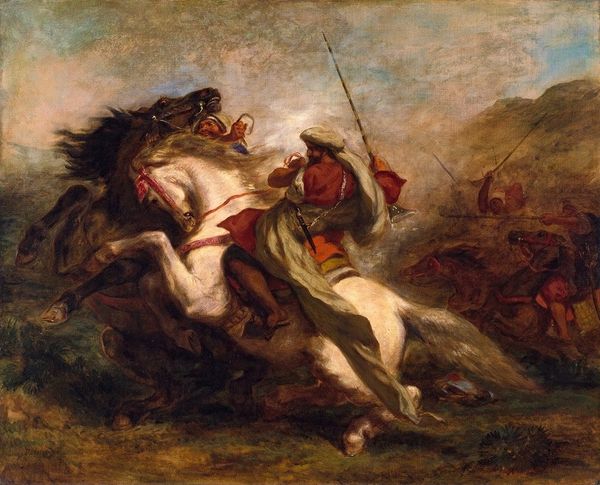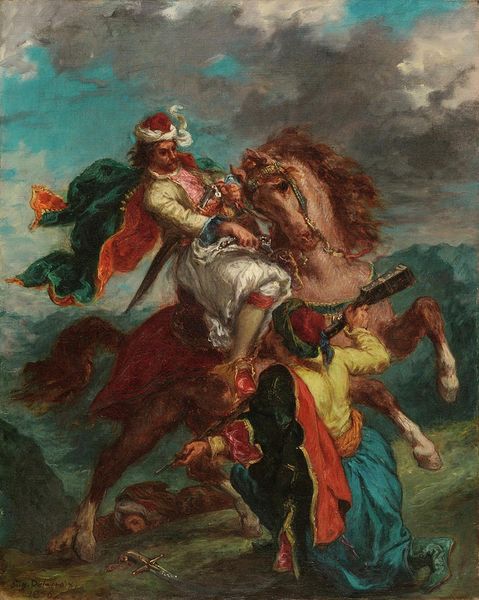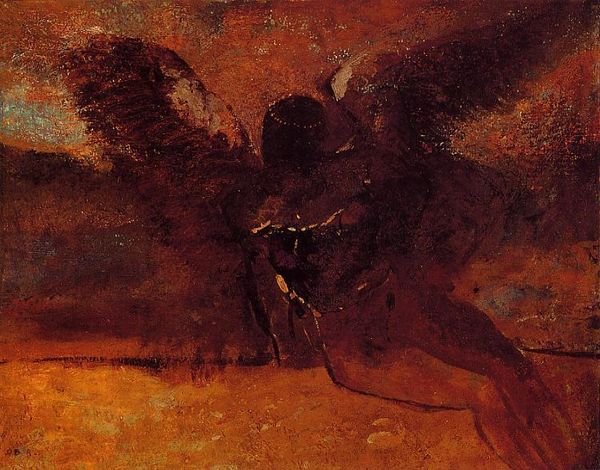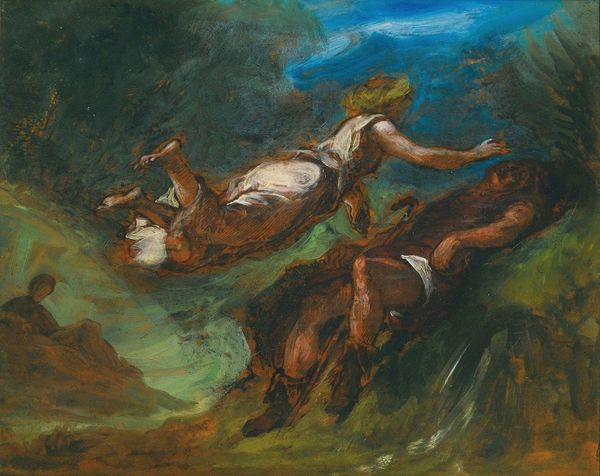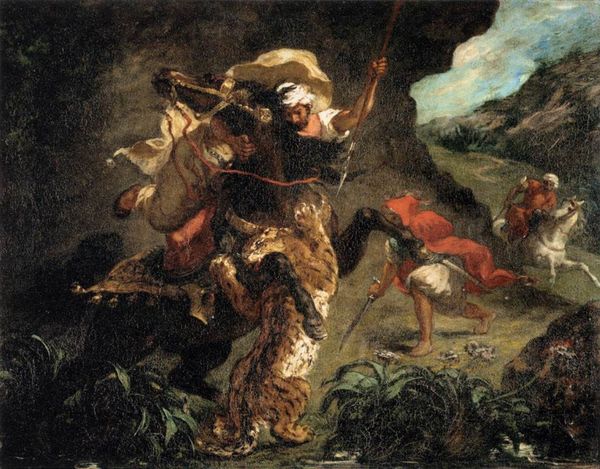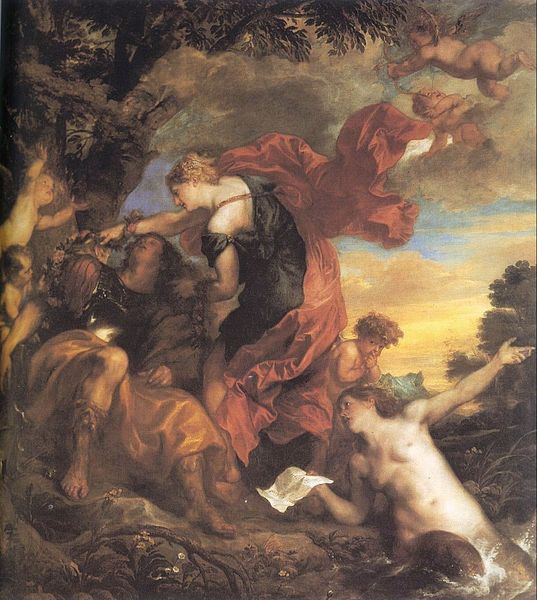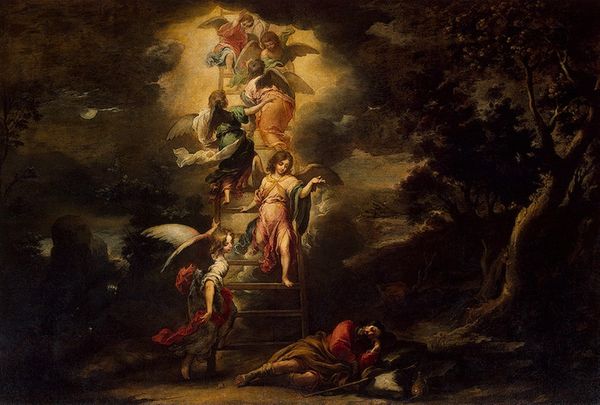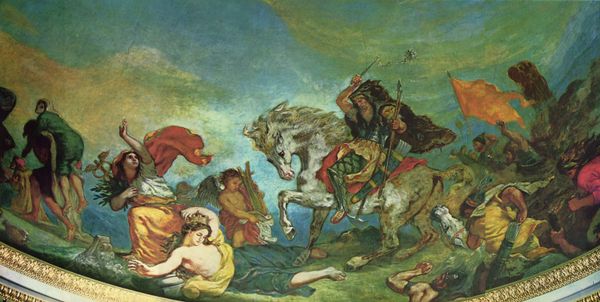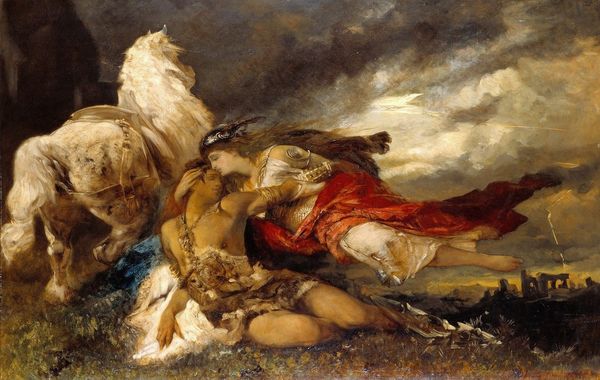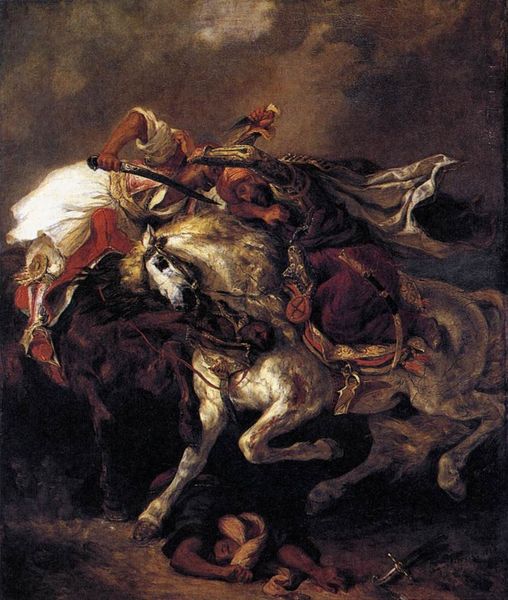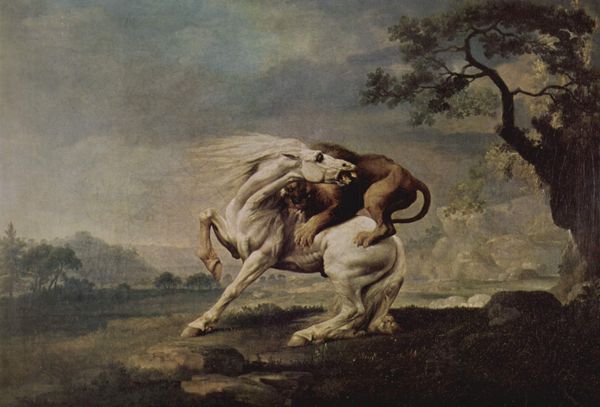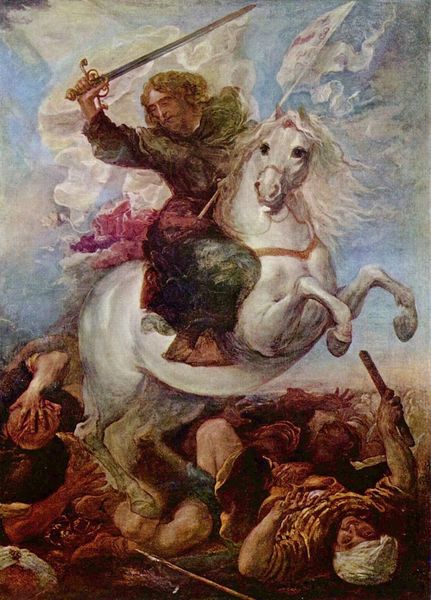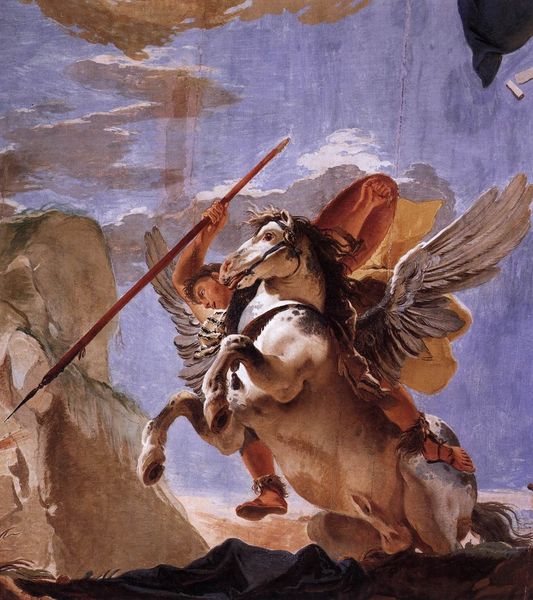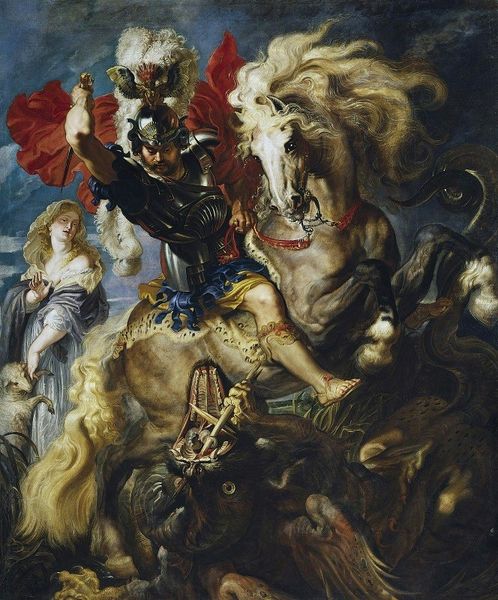
painting, oil-paint
#
portrait
#
painting
#
oil-paint
#
landscape
#
figuration
#
oil painting
#
romanticism
#
animal portrait
#
horse
#
men
#
genre-painting
Copyright: Public domain
Curator: Editor: We’re looking at “An Arab Horseman at the Gallop,” painted by Eugène Delacroix in 1849. It’s an oil painting, and the movement he's captured is incredible. The rider and horse are a blur of energy. What do you make of it? Curator: The application of paint is remarkable. Notice the thick impasto in areas like the horse's mane and the rider's cloak, and the textural differences? The means of production here—the physical act of applying oil paint to canvas—isn't just representational. It speaks to Delacroix's labor, his engagement with materiality, with the actual stuff of art. Editor: I see what you mean. It's not just a picture of a horseman; it's about the paint itself almost enacting the scene. Is there a significance to his choice of oil for this? Curator: Absolutely. Oil paint, at that time, was becoming increasingly industrialized. Tubes of paint allowed artists like Delacroix unprecedented freedom to work outside the studio. How does this relate to the depiction of the 'exotic' or 'oriental' subject? Editor: I suppose the freedom of movement and travel reflected in the material's availability then connects with the theme of an "Arab Horseman"? Was there a market for these types of works during that period? Curator: Precisely! There was growing fascination in Europe with the "Orient", and paintings like these, rendered quickly and dynamically thanks to the new accessibility of oil paints, were highly consumable commodities. We see a relationship developing between production and exoticism here. Editor: That's fascinating – the ease of creating these images, afforded by changes in material production, feeding into a romanticized and marketable vision of another culture. It really gives you a different perspective on what Delacroix was doing. Curator: Indeed. By examining the material conditions of its making, we can unpack so much about this work, the artist, and his historical moment.
Comments
No comments
Be the first to comment and join the conversation on the ultimate creative platform.
